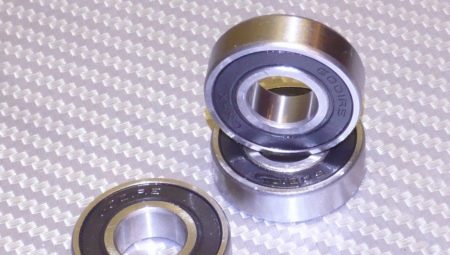Sooner or later, the moment comes when the scooter rolls with difficulty or does not move at all. In addition to damage to the wheel itself (rim, cast or inflatable tire), as well as damage to the axles and steering bushes, moving elements can fail, without which the bushes and axles would quickly disappear - bearings.

Types
Before removing a worn bearing, select a new one correctly. The fact is that if the diameter of the balls and cages is incorrectly selected, the wheel will dangle, and after a dozen and a half, you will also smash new bearings into smithereens.
Basically, the wheels on children's scooters have a diameter of 98 or 100 mm. There are also models with wheel diameters of 80, 100, 110, 125, 145, 175, 180 and 200 mm. The larger the diameter of the wheel, the better the cross-country ability on the scooter along increasingly bad roads with cracks, gravel, broken asphalt and other obstacles. Types of bearings are presented. brands Flashrider 360, Proto Gripper, Slamm, BlackVoice V2 and several others.
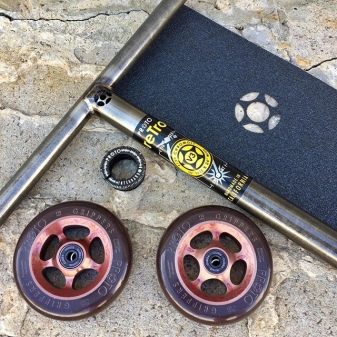
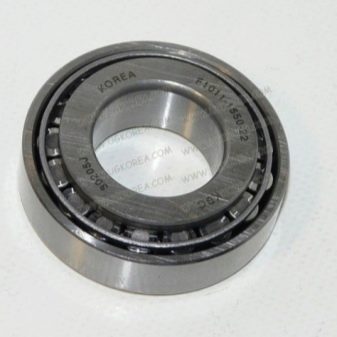
In addition to this, there is another classification by types, important in this matter: sealed and shielded bearings. Screened roller bearings prevent dust and sand from entering the ball mechanism. Sealed give riders feel precise handling in corners, more resistant to vibration and shock. They are also equipped with a rubberized or Teflon layer that traps foreign particles and lasts long enough without the need for more frequent introduction of oil or grease into its mechanism.However, changing balls in them is not easy.
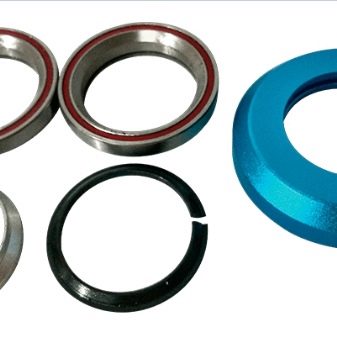
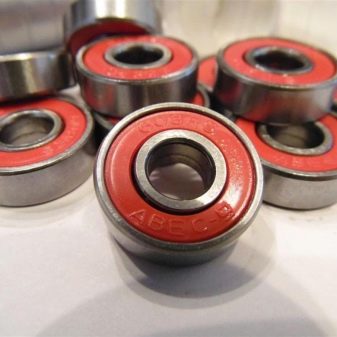
Class and quality
Ball bearings for scooters are no different from those used in skateboards and roller skates. This is mainly the 608th model. Each of the wheels has 2 such bearings. Marking - abbreviation ABEC (a special group of developers of industrial bearings), accuracy class - from 1 to 11. The higher the accuracy class, the longer the bearing will last, but the steel grade is also important.
A high-precision bearing is more wear-resistant - nothing dangles in it, it can be subjected to a significantly greater load. It should be as wear-resistant as possible, but not so much that the bearing itself is worn, but the sleeve. High-quality bearing steel is found in well-known manufacturers, for example, KMC.
You can install any class of bearings found on sale that day if you urgently need to keep going any further. In cheap scooters, not steel, but fully or partially ceramic ball-bearing sets can be used.
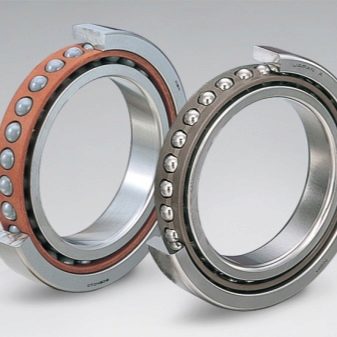
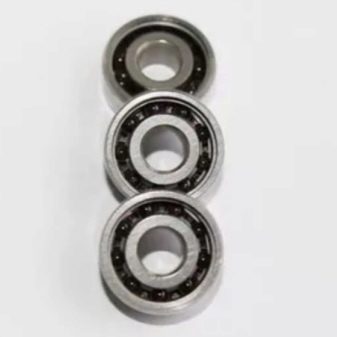
Features of bearing removal from 6- and 8-mm bushings
Before choosing and replacing a bearing, remember that the bushings for the wheels are available in diameters of 6 and 8 mm. The diameter of the sleeve determines how this bearing can be pulled out. You can estimate the diameter of the sleeve by looking at the axis itself.
The 8-mm wheel hub has a “floating” mechanism - it is fixed, and its end goes slightly back and forth between two ball bearings holding it. To remove such a bearing, it is tampered with an Allen key and easily pulled out.
There are special keys for sale, but any technical tip or wedge can be used.
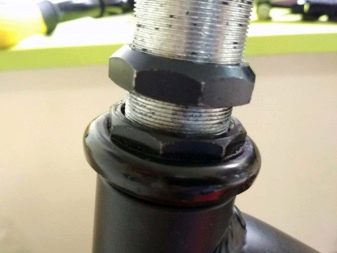

But to remove the bearing from a 6 mm bushing is somewhat more difficult. He does not scrub, but is knocked out. To do this, press on the sleeve, and not on the bearing itself, otherwise you will bend its cages - it will squeeze it out of the mount. The sleeve resembles a thin ring in the center of the bearing itself, its thickness over the entire circumference is not more than a millimeter. The pressure can be significant - some manufacturers reliably press the bearing into the outer part of the hub located in the center of the wheel rim. Any suitable piece of iron or stick will do.
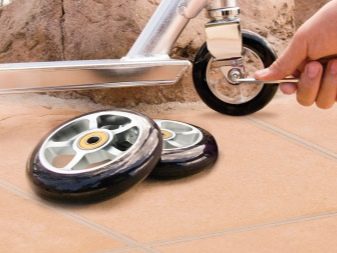
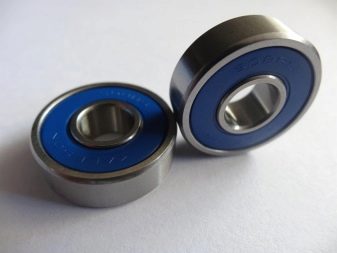
How is the support bearing removed?
The wheel bearing itself is an internal metal wheel that spins on the outside. Clear and lightweight glide is provided by rolling balls on these surfaces. The durability of the balls and these rollers provides a careful size ratio, eliminating their play (hanging in the gaps), and to prevent premature boring, thickened machine oil or solid oil is added to the ball bearing.
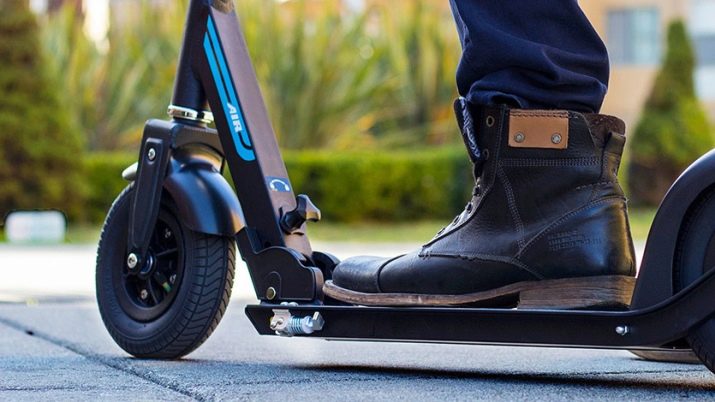
Removing the thrust bearings pressed into the sleeve is the most difficult thing - especially the steel wheel fused into the wheel rim of the scooter. The latter option may require moderate heating of the bearing and sleeve, which, with the slightest overheating, is fraught with a skew of the rim. But this problem is solved if you have ordinary and wooden hammers, a T-shaped hexagon.
It is better to use a wooden hammer - not all bearings will withstand the blows of a conventional one, since this is very high rigidity upon impact. As a tool for removal, you can use a bolt or a piece of hairpin slightly smaller than the sleeve in diameter with nuts and enlarged washers.

How to remove the bearing from the scooter wheel?
Follow these steps to safely and quickly remove the wheel bearing.
- Using a T-key, push away gaskets, insulating rollers and balls from foreign particles entering the mechanism.
- Put on the opposite side, which coincides with the direction of removal, a spacer or bolt with washers and nuts, and with light strokes of a wooden hammer, press out one or more bearings from the sleeve.Before this, place the wheel with one edge on a solid object or position it so that the center of the rim is in the gap of the stand on which you press out the bearings.
- Place the T-key so that its working (impact) end is not larger than the diameter of the sleeve. Insert the end into the hole in the ball bearing to pry off the gasket.
- Fasten the end of the key to a holding part that acts as a bearing pusher. Put all the weight on the wheel being machined and press out the bearing crown held by the key. At the same time, the gasket will also be removed.


When this technique does not work, a bolt with washers will help, which (each on its own side) holds the nuts. Drive out the bearing with this bolt. If the bearing is broken and worn so that even its balls are sharpened, feel free to press it out of the wheel, since in this state it is no longer suitable.
How to put a new bearing?
After removing the old bearing from the wheel, prepare a new one. The ideal solution is to purchase a dozen wheel bearing sets for future use (after purchasing a scooter). It is advisable to purchase them from the same manufacturer - only a set of one size fits each of the scooter models, no interchangeability is permissible here. To install a new bearing in the scooter wheel, do the following:
- install the bolt on a new bearing;
- apply a little motor oil or lithol (or solid oil) to the crown with balls;
- install the ball bearing itself in the center of the wheel - to where its seat is;
- Using a wooden mallet, carefully push it into the wheel hub.
Having hammered the ball kit into the wheel, pull out the bolt and set the wheel to its original place on the scooter.



How to change ball bearings on the scooter wheel?
Bearings on the steering wheel protect the steering column from wear, as well as wheel bearings protect the wheel itself and its axis. The lower bearing is in contact with the fork holding the front wheel - like on a bicycle. Upper - does not allow the steering wheel to hang out and also provides its easy turns if necessary.
To replace the ball bearing kits on the scooter wheel, do the following.
- Remove the steering wheel itself. To do this, use a hex wrench to lower the clamp. Be careful not to lose control of the screws.
- Unscrew the steering column, in which the bearings are located. To do this, loosen the lock and adjusting nut completely.
- Use a screwdriver to pry the ball separator and remove it, pull out the steering adapter, followed by the lower ball bearing.
- Clean the axle and steering wheel from traces of old grease. Insert a new lower ball bearing, slide the adapter onto the axle and install the upper ball bearing. Remember to lubricate the bearings - oil or grease will eliminate the friction of the balls and cages against the axle and adapter.
- Set the adjustment on the inner nut - the steering wheel should not hang out when cornering. Tighten the locknut over the previous one.
- Establish a wheel and tighten a fixing collar.

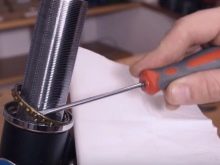

Now you can hit the road.
Troubleshooting
Place a block or brick so that the scooter does not roll forward or backward. Lift the front wheel and rotate it so that the steering wheel rotates with it. With perfect steering settings, the wheel will not dangle. Sometimes repairs are limited only by pulling the entire system to eliminate the play of ball bearings.

If the steering column is loose, remove the steering wheel, loosen the lock nut and tighten the adjusting nut under it. This can be done using a conventional open-end wrench to fit its size. Having achieved the absence of steering clearance, tighten the lock nut and put it back in place. When jamming - for example, it turns with a noticeable effort, grinding and crackling - change the worn set of balls. Steering columns most often use separators for 13-19 balls.
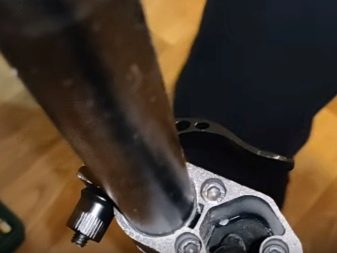
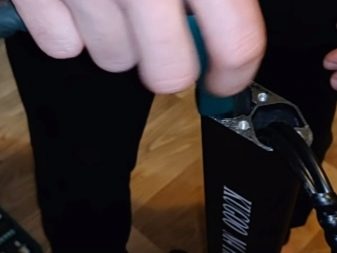
If the wheel itself sticks, it is possible that the ball bearings on it are destroyed. When a breakdown occurs on the wheel on which the brake is installed, it will be necessary to remove the brake pads in order to pull it out. The shock absorber may also be temporarily removed. Further steps to replace the bearings on the wheels remain the same. The number of balls on one wheel cage is most often 7–9, since the wheel axis has a small diameter compared to the steering axis.
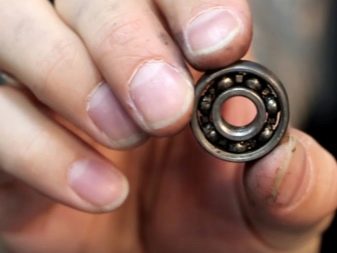
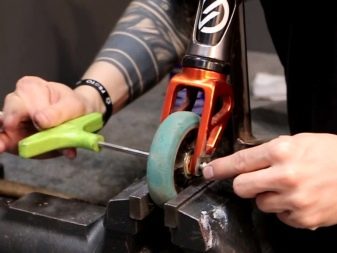
See how to replace a bearing in a scooter in the next video.
